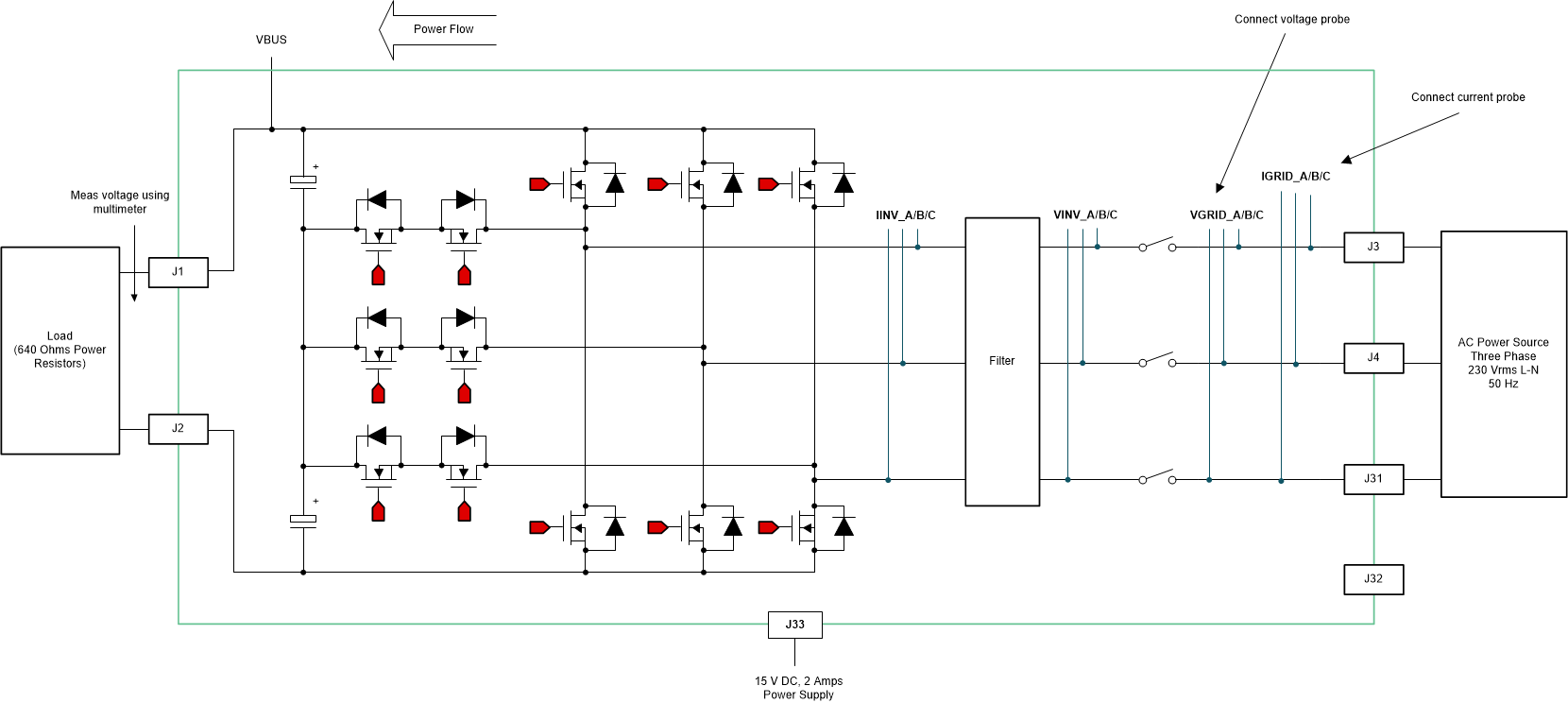TIDUE53I march 2018 – july 2023 TMS320F28P550SJ , TMS320F28P559SJ-Q1
- 1
- Description
- Resources
- Features
- Applications
- 6
- 1System Description
- 2System Overview
-
3Hardware, Software, Testing Requirements, and Test Results
- 3.1 Required Hardware and Software
- 3.2 Testing and Results
- 4Design Files
- 5Trademarks
- 6About the Authors
- 7Revision History
3.2.3 Testing PFC Operation
Labs 5, 6, and 7 elaborate the steps for running the power stage in the PFC mode. Lab 5 is the PFC mode of operation in open loop, Lab 6 is the PFC mode of operation with closed current loop. Lab 7 is the PFC mode of operation in closed voltage and current loop and this will be checked both on the HIL platform and actual hardware.
A check for DC bus overvoltage is added to all PFC Labs, Lab 5 through Lab 7, using a filtered value of the DC bus voltage. The TINV_filterAndCheckForBusOverVoltage() function runs from ISR1 and checks for DC bus overvoltage condition. Under OV condition this function shuts off all PWM outputs and registers the system operating state as “bus over-voltage state”. Filtered DC bus voltage is calculated from instantaneous sensed DC bus voltage using the averaging function EMAVG. This is all calculated inside ISR1.
The feed-forward and decoupling function is implemented inside ISR1 and added for all PFC Labs that use a current loop. Therefore, for the PFC mode, this is done in Lab 6 and Lab 7. For this feed-forward and decoupling function filtered DC bus voltage is compared against a user-defined minimum bus voltage to calculate a clamped filtered DC bus voltage. This is also done inside ISR1. This clamped filtered DC bus voltage and the current controller output are finally used to implement the feed-forward and decoupling function.
For SDFM-based current sensing, overcurrent protection (OCP) is also added for all PFC labs.
Figure 3-17 shows the hardware setup, the DC terminals J1 and J2 are connected to a resistive load. A 15-V auxiliary power supply is connected to terminal J33. Three phase AC source is connected across terminals J3, J4, and J31 (A, B, and C). J32 is the neutral terminal which is left unconnected to the source. See the hardware test set up section for actual details of the equipment used for configuring the test.
 Figure 3-17 PFC Mode Test Setup
Figure 3-17 PFC Mode Test Setup